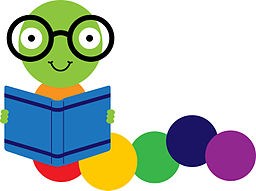5 Early Literacy Practices

Before children can learn to read, they must develop a range of early literacy skills. Learning these skills, which begins at birth, has a long-term impact on children’s reading achievement and academic success.
Five simple practices - talking, reading, writing, singing, and playing - are used to develop language and pre-reading skills in very young children. To learn more about each practice, choose one from the list below:
Talking
Talking with children is one of the best ways to help them learn new words and information. Children learn language and other early literacy skills by listening to their parents and others talk. As children hear spoken language, they learn new words and what they mean. They learn about the world around them and important general knowledge.
Activities to Do at Home
Note: Speak to your child in the language you know best.
Babies:
- Encourage babble - imitate what they say
- Stay silent so they can talk back
- Use all kinds of words even if they don’t understand
- Speak in “Parentese”- elongated vowels, high pitch, exaggerated facial expressions and short, simple sentences
Toddlers:
- Add signing to their babble to help your child be understood- signing aids in speech development
- Narrate what you are doing- “I’m folding the socks and then I’m going to put them away.”
- Ask your toddler to tell you about something that happened to him or her today; ask for more details so your child can expand on the story
Preschoolers:
- Ask questions that have more than a yes or no answer. This will get your child to think about possible answers and ask more questions.
- Ask open ended questions- “Why do you think that happened?”
Writing
Writing and reading go together. Both represent spoken language and communicate information. Scribbling and writing help children learn that written words stand for spoken language. Children can learn pre-reading skills through writing activities.
Activities to Do at Home
Babies:
- Encourage fine motor skills with fingerplay. (Itsy Bitsy Spider, Where is Thumbkin)
- Give your baby items to hold and manipulate in their hands.
- Speak to your baby and say words of items they see. (cat, mom, dish, etc.)
- Expose your child to books. Seeing words written will encourage reading and writing.
- Read to your child.
Toddlers:
- Provide your toddler with crayons in a supervised environment.
- Encourage playing with puzzles as this increases fine motor skills.
- Give your child snacks such as Cheerios to build muscles and coordination in hands and fingers.
- Read to your child. Picture dictionaries are a great activity. Point to the words as you read them to your child. Point out starting sounds ("M" is for Mom).
Preschoolers:
- Practice writing words. Start with their name.
- Provide supervised activities with scissors and writing instruments.
- READ - READ - READ.
Reading
Reading together is the single most important way to help children get ready to read. Shared reading increases vocabulary and general knowledge. It helps children learn how print looks and how books work. Children who enjoy being read to are more likely to want to learn to read themselves.
Activities to Do at Home
Note:Model reading to your child—if your child sees you reading, he/she will most likely enjoy reading too. Show your child the importance of signs around you. For example—”There’s the exit sign—that’s how we get out of the store.”
Babies:
- Have Board books available for baby to look at—try “reading” the books
- Have baby imitate sounds—have an animal picture and tell child the sound it makes
- Sing the “ABC” song
Toddlers:
- Use puppets to tell a story
- Have child retell a story with puppetsUse puppets to tell a story
- Look at pictures and make up a story about what could be happening
Preschoolers:
- Use the same activities as you would with toddlers
- Provide letter magnets or felt letters and “write” simple words like “cat,” “dog”
- Draw pictures and label what they are
- Have children draw pictures for a story and tell you the story. You write the words to create a little book.
- Label objects around the house using index cards
Playing
Playing helps children put thoughts into words and think symbolically so they understand that spoken and written words can stand for real objects and experiences.
Activities to Do at Home
- Encourage dramatic play – make up stories using puppets and stuffed animals.
- Pretend to read a book - let your child tell you a story based on the pictures in a book.
- You don't need expensive toys. Inexpensive items that you have around the house can be used for imaginative play.
Singing
Songs are a natural way for children to learn about language. Singing also slows down language so children can hear the different sounds that make up words.
Activities to Do at Home
Note: Sing to your child the songs you know and love. You don’t need a perfect voice, just some enthusiasm.
- Move to the music
- Sing Nursery Rhymes
- Fill a plastic bottle with cereal or use a pie-tin and wooden spoon as percussion instruments